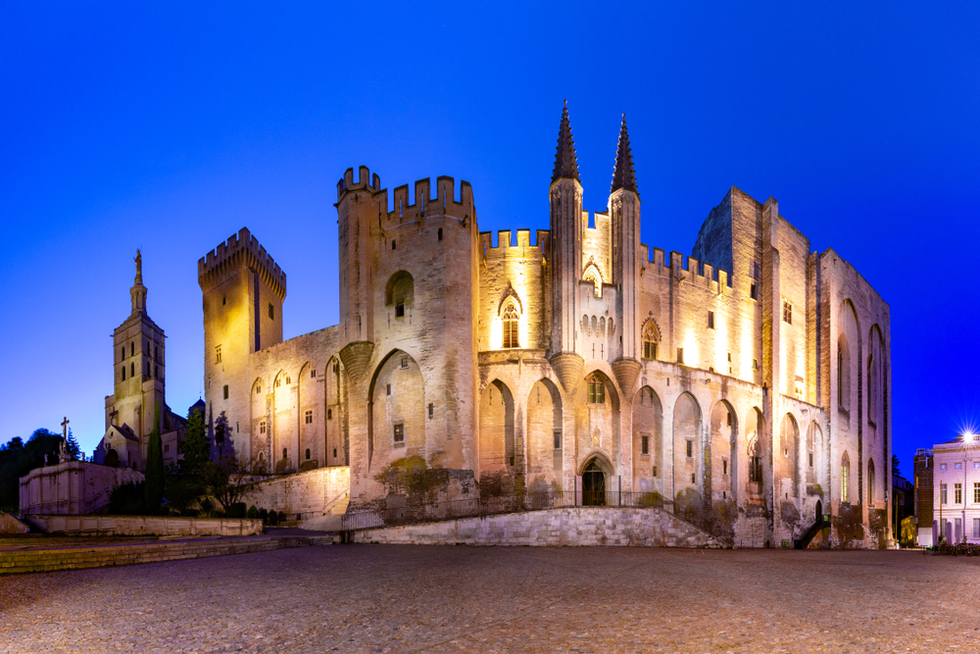Dominating Avignon from a hilltop is one of the most famous, or notorious, palaces in the Christian world. Headquarters of a schismatic group of cardinals who came close to destroying the authority of the popes in Rome, this fortress is the city’s most popular monument. Because of its massive size, you may be tempted to opt for a guided tour—but these can be monotonous. The detailed audioguide, included in the price of admission, will likely suffice. In late 2017 the palace also introduced augmented reality iPad-style tablets (also included in ticket price) which reveal historic incarnations of each room you visit—in all their papal glory.
A highlight is the Chapelle St-Jean, known for its frescoes of John the Baptist and John the Evangelist, attributed to the school of Matteo Giovanetti and painted between 1345 and 1348. The Grand Tinsel (Banquet Hall) is about 41m (134 ft.) long and 9m (30 ft.) wide; the pope’s table stood on the south side. The walls of the Pope’s Bedroom, on the first floor of the Tour des Anges, are painted with foliage, birds, and squirrels. The frescoes of hunting scenes in the Studium (Stag Room)—the study of Clement VI—date from 1343. The Grande Audience (Great Receiving Hall) contains frescoes of the prophets, also attributed to Giovanetti and painted in 1352.
Note that the 12th-century Cathédrale Notre-Dame des Doms cathedral, just next door on the main square, contains the elaborate tombs of popes Jean XXII and Benoît XII.






 About our rating system
About our rating system


